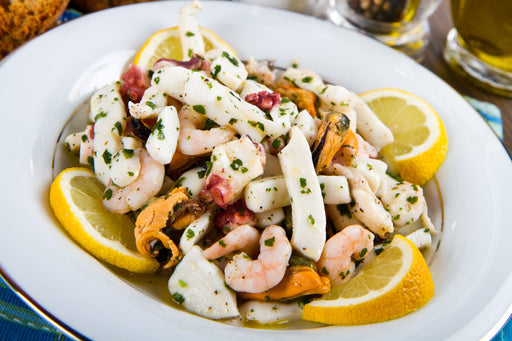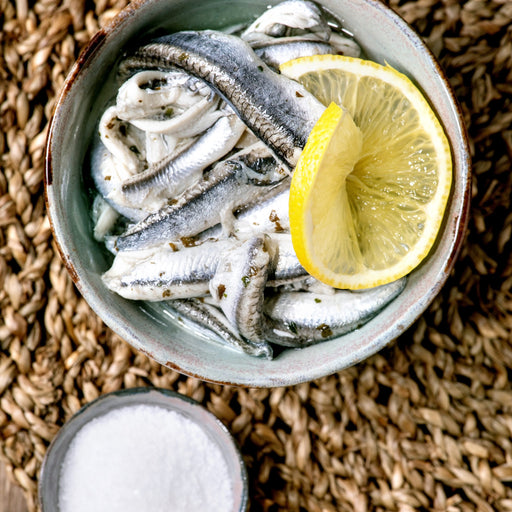MORE AND MORE AMERICAN CHEFS are looking to sustainable fish options and discovering what Europeans have long known: sardines and herring are good eating when freshly caught. Sardines and herring are both members of the herring Family – Clupeidae – which includes other oily, small schooling fish such as shad and anchovies. Confusion can reign when trying to figure out exactly what their differences are – for example, here in Maine a small, juvenile herring is dubbed a “sardine” and once was canned as such. Some will market domestic herring as “Atlantic Sardines”. For Europeans, larger sardines – those generally longer than six inches – are called “pilchards”. Some sources list almost 20 different species as sardines!
The similarities between the two far outweigh the differences, especially from a culinary perspective. Both are “oily” fish – although the smaller they are, the more delicate in texture, and less powerful in flavor than larger specimens. This “oil” is rich in healthful omega fatty acids and is the source of their flavor (lower fat content in some sardines and herring can actually make the fish taste dry when prepared). Both fish have large, shimmering scales that are loosely attached (and easily removed) and are extremely boney. However, when it comes to the primary culinary distinction between Sardina pilchardus – the “true” European Sardine – and our locally caught Atlantic Herring, the Sardine tends to be a bit more plump and meaty than the Herring.
When we think of sardines we most often think of them canned and packed in oil. The name “sardine” itself it is coined after the island of Sardinia in the Mediterranean, where they schooled abundantly and some believe we first canned there. In Maine, “sardine” canning was a massive industry dating back to the late 1800’s that peaked in the 1950’s. Sadly, the industry collapsed, and today there is only one company producing canned Maine sardines – although the canning itself is done in Canada. Herring in Maine is now in highest demand as lobster bait.
Despite our association with sardines and herring coming from a can, both are excellent when prepared super-fresh. The traditional way to prepare both is to scale and gut the fish and grill them, preferably over charcoal or wood coals, with a bit of oil. They are also excellent when stuffed and baked, split and panfried. Some traditional European recipes call for them to be filleted and simply marinated in oil and herbs. Avoid using them in soups or stews as they are simply too oily and boney. Care should be taken with fresh sardines and herring as they are delicate fish that bruise easily and have a limited shelf life.
We offer herring and sardines year round in marinated packs. Wild, fresh European Sardines are a delicacy available only in the summer months.
Catch Regions:
- Sardines: Mediterranean Sea to East North Atlantic
- Herring: Gulf of Maine and Bay of Fundy
Seasonality:
- Year Round: Herring much more abundant in Summer Months
Catch Methods: Trawl Nets, Seines, Inshore Weirs (Maine)
Flavor Profile: Pronounced, rich
Texture Profile: Delicate
Substitute:
- Smelts
- Anchovies
- Mackerel





